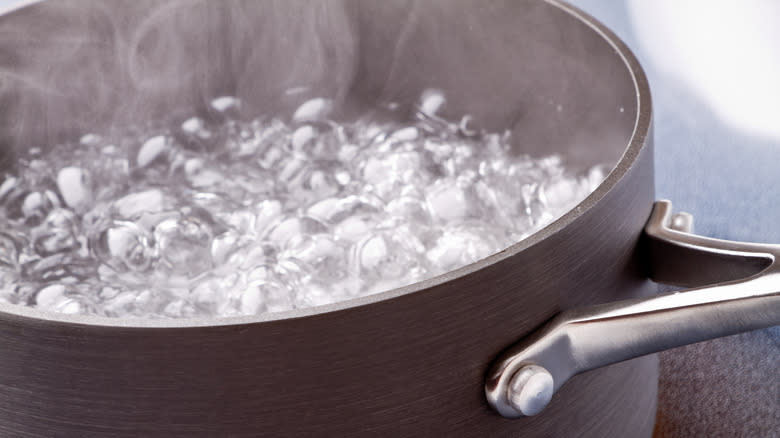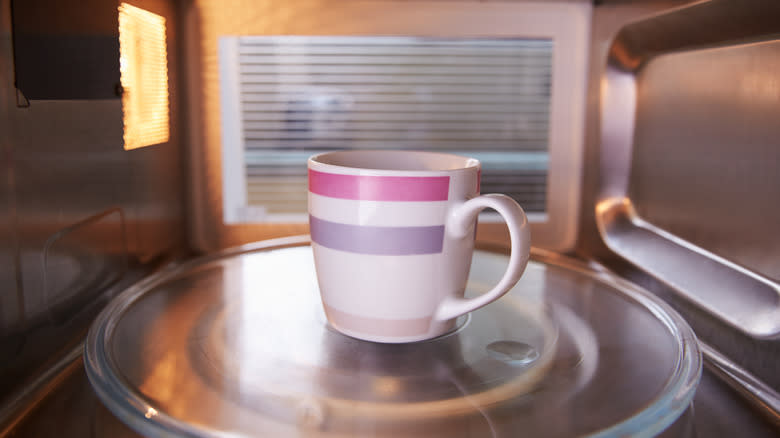The Difference Between Boiling Water And Microwaving It

While we'd all love to have time to wait for the water in a tea kettle to boil whenever we want to make a cup of tea, sometimes we just don't get that luxury. If you need hot water right away in the morning, it's much easier and quicker to turn to the microwave. But are the results really the same? You can, of course, nuke a mug of water in the microwave, and it will emerge steaming hot.
But if you're expecting the exact same results as the ones that come from using a kettle, you may be disappointed. According to a 2020 study published in AIP Advances, liquids warmed in the microwave will end up hotter on the top than on the bottom. The researchers conducted an experiment showing that the temperature difference between the top and bottom of a glass of water heated in the microwave was a whopping 7.8 degrees Celsius (14.04 degrees Fahrenheit) in some places.
When you use a tea kettle or boil water on the stove, however, you'll end up with a liquid that's been heated much more evenly. This is because the water will have been warmed from the bottom, which causes it to naturally rise and increase the temperature of the surface liquid, leading to hot water throughout your kettle or pot instead of a mug with noticeable hot and cold spots.
Read more: 15 Boba Flavors, Ranked Worst To Best
How To Help Water Heat Evenly In The Microwave

So, if you're short on time and need to stick your mug in the microwave, are you doomed to drink unevenly heated tea? Not necessarily. While it's true that nuking your water won't yield the same uniform results as boiling it, there are a few things you can do to help things along. As with microwaved food, make sure to stir your water after it comes out of the device before inserting your tea bag, which will help the warm, surface-level liquid heat up the cooler parts underneath.
You can also get ahead of the uneven temperatures and take your mug out of the microwave at short intervals, stirring in between each one. If your device has a turntable, you're in luck -- simply place your cup on its edge so it doesn't get stuck in a cold spot. There are also special microwave-safe, silver-rimmed cups available that can help heat liquids more evenly.
To avoid super-heating, which occurs when the temperature of the water surpasses boiling point and causes an eruption in your microwave, you can also heat your water with a wooden spoon or toothpick in the mug. The wood item helps the bubbles dissipate, encouraging the water to boil instead of overheating. It takes a little finessing, but it is possible to get adequate hot water from the microwave. Still, if you have the time, boiling it on the stove is a much more ideal option.
Read the original article on Tasting Table.

